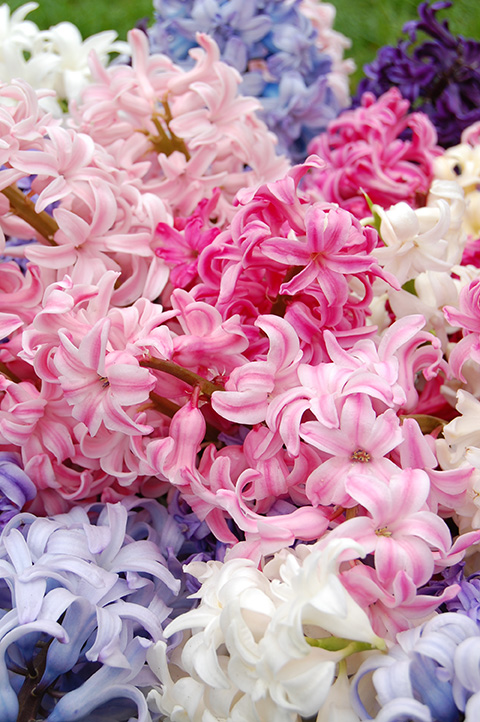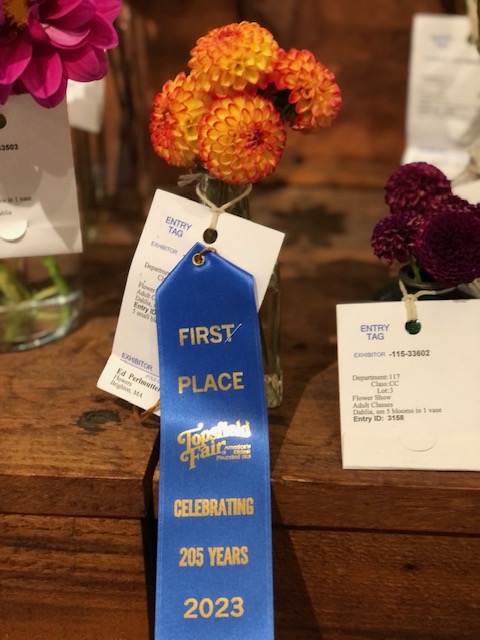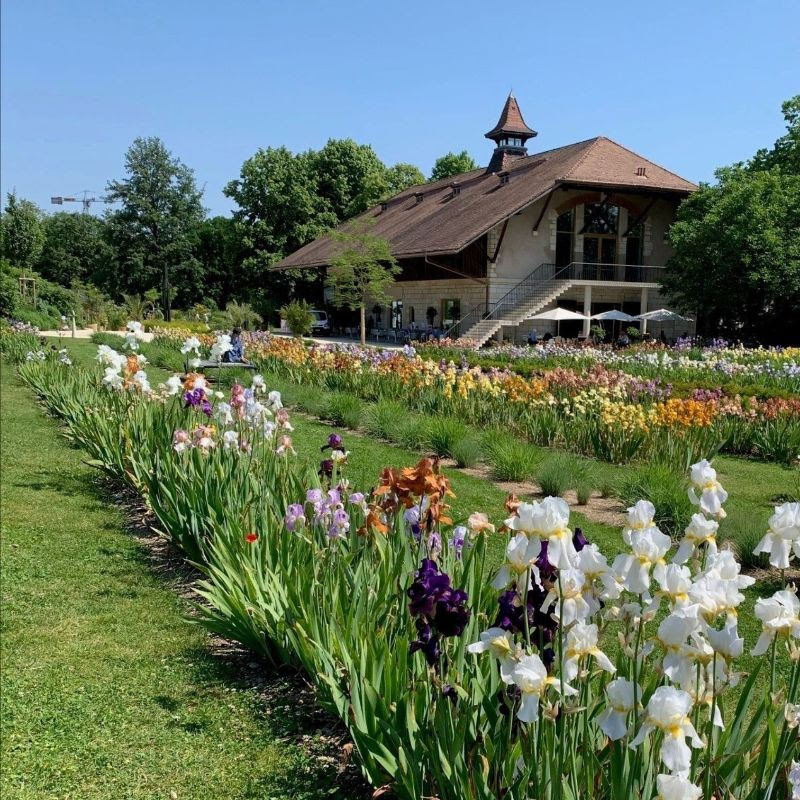These shiny red beetles (also known as lily leaf beetles, Liliocerus lilii) is a destructive Eurasian species that has been spreading across New England and the midwest since the 1990s. Both adults and larvae feed on the leaves, stems and flowers of native and hybrid lilies and can completely defoliate a plant if left unchecked. As our lilies break dormancy and send up their tender shoots here in Michigan we realized it’s time to start considering controlling them now. Adult beetles overwinter in the soil or leaf litter, emerge in spring and start laying eggs on iris leaves right away, so early detection is important. Our local extension bulletin has pictures of the adult, eggs and (disgusting) larvae to help you recognize them. Handpicking is a great place to start; the beetles are very sensitive to motion, so it’s helpful to hold a jar of soapy water under the leaf as you reach in to try to catch and crush them. Check your lilies daily early in the season for best control; if you can keep the population at a low level you can check less often in the summer.

If that’s not enough, however, we found Paul Siskind’s article in the North American Lily Society bulletin helpful as he shared his investigations into other relatively ‘natural’ or ‘environmentally friendly’ methods of control. He found that dusting with diatomaceous earth isn’t particularly effective, though it’s also unlikely to harm beneficial insects. Deer or rabbit repellents only had some effectiveness if they contained clove oil. But “if you have a moderate-severe infestation, the ‘safest” and most effective insecticide is spinosad because it kills both the beetles and the larvae. Compared with many other broad-spectrum insecticides, spinosad is safer because it doesn’t get absorbed into the plant and spread systematically into the plant’s fluids or pollen; rather, it remains of the leaf surface, where it kills the beetles/larvae by both contact and via ingestion.” Of course, read and follow all directions on the label, and avoid spraying blossoms or when wind interferes with targeted application onto just the lily leaves.
Along with this, Paul recommends alternating a spinosad spray with neem oil, which, though it only kills larvae, helps to prevent the development resistance to spinosad. The active ingredient in Neem that kills this species’ larvae is azadirachtin which, unfortunately, is removed in neem oils made through alcohol extraction, often found in products labeled as containing “clarified hydrophobic extracts of neem”. Look for “cold-pressed neem oil”, sometimes listed as “pure” neem oil. As far as timing, he says “At the beginning of the season (as soon as the lilies start to sprout), try to spray the lilies twice a week with spinosad. When you start seeing larvae, switch to neem once a week and spinosad once a week. On the days without spraying, do your usual hand-picking of beetles and larvae.” Once the egg-laying season has ended (about 4-6 weeks), you should see a decline in beetles and larvae and be able to cut back to using just spinosad once a week while still hand-picking.
Is it worth it? Native lilies are highly attractive to the beetles, so by reducing them in gardens, we can protect other species in the wild. Daylilies are not affected by these beetles, and both Lilium speciousum rubrum ‘Uchida’ and Lilium ‘Black Beauty’ have been observed to be less attractive to - and less damaged by - the beetles than Asiatic or other Oriental varieties. And lilies are beautiful and often fragrant, so for many, the answer is yes - as Paul says, “It might take a full season (or two) to get a bad infestation under control, but once it’s under control, it’s not difficult to incorporate this method into your normal gardening routine.”

















